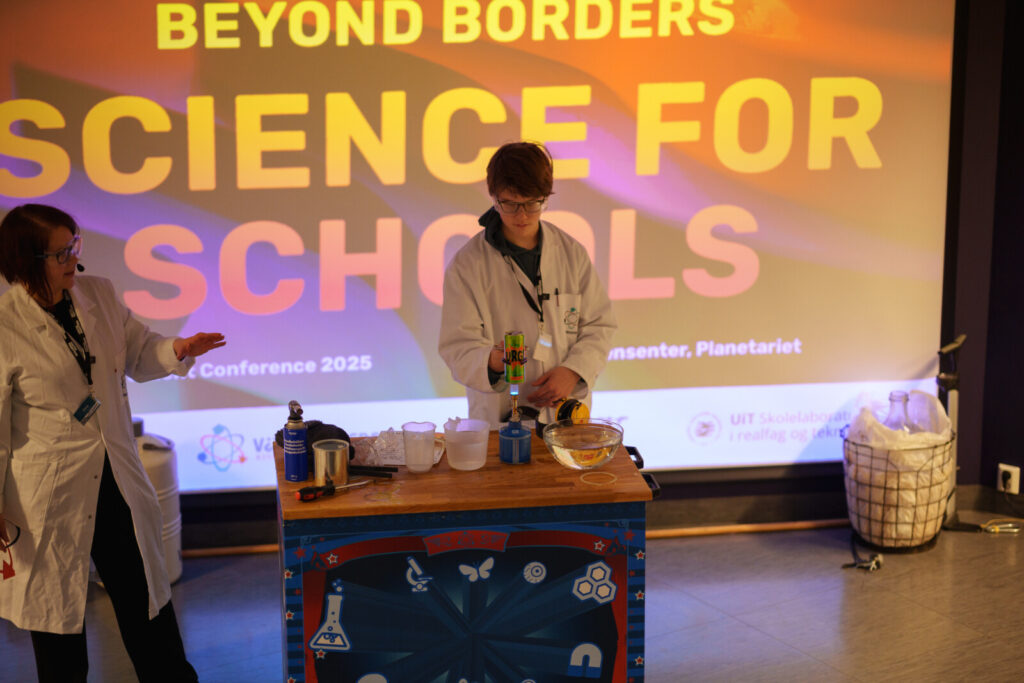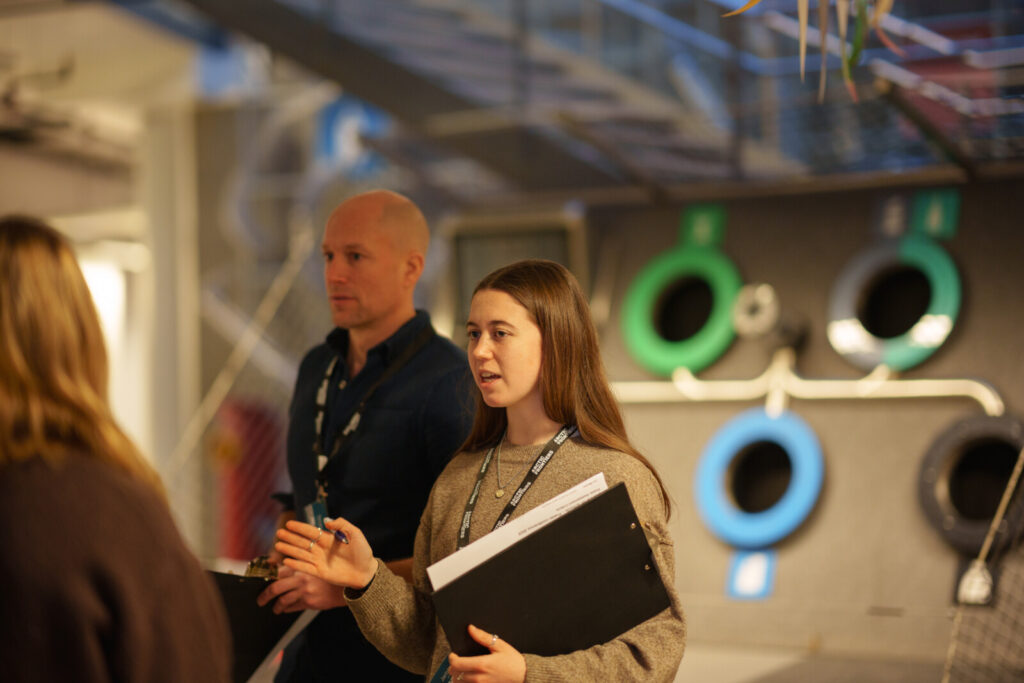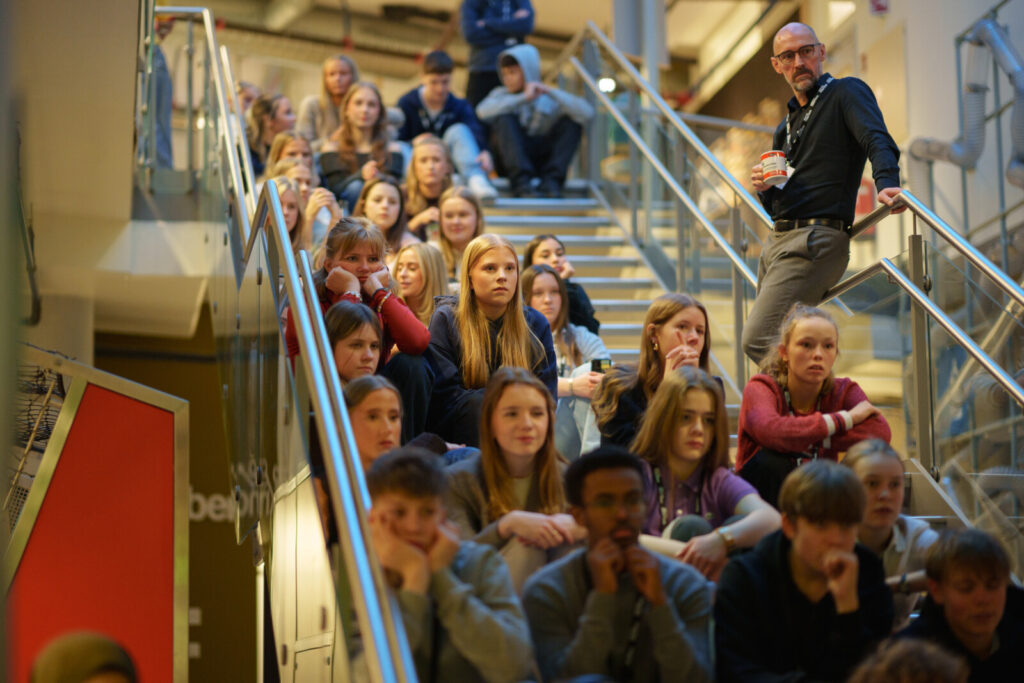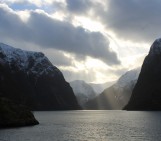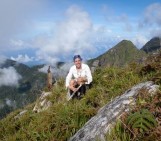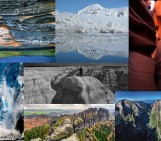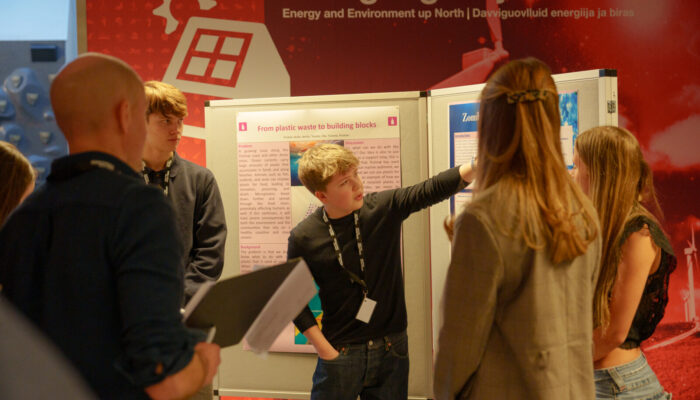
Growing up, I didn’t know what it meant to “do research”. I did some research projects in high school, but research as a field path was totally foreign to me until I started university. Unlike me, the young students who participated in this year’s Arctic Frontiers Science for Schools program were given a first-hand glimpse into what it means to conduct professional research.
The Science for Schools program is a collaboration between Arctic Frontiers and the Northern Norwegian Science Center that exposes kids to scientific research at an early age. This program allows students to engage their curiosity, design their own project, and investigate answers to some of the Arctic’s biggest problems. This program collaborates with schools from all over the Arctic city of Tromsø, Norway; this year over 580 middle- and high-schoolers participated.
Building the foundation
The program consists of three phases, each designed to provide insight into the research process. In the Fall, students were invited to “Inspiration Days” at the Science Center, where they heard from scientists about research conducted in Northern Norway and participated in some hands-on activities. This first phase introduces the students to some of the problems they could tackle and gets their wheels turning about the tools they could use to explore them.
Following the Inspiration Days, the students form groups in school and choose a topic to investigate. They’re given the freedom to explore anything that interests them within the guiding theme of “The Arctic”. Over the next few months, they learn how to find reliable sources, formulate a research question, and discuss their findings. The end goal: creating a scientific poster.
After about a semester of work, the groups present their posters within their own school. From there, the most outstanding posters from each school are selected to present at the conference-style poster competition in the Science Center.
The Big Day(s)
This year, the competition took place over two days. Each day an award was presented to the best poster, the best presentation, and the most creative. At the end of the second day, three overall winners were selected to present their poster at Arctic Frontiers 2025: Beyond Borders, alongside professional researchers.
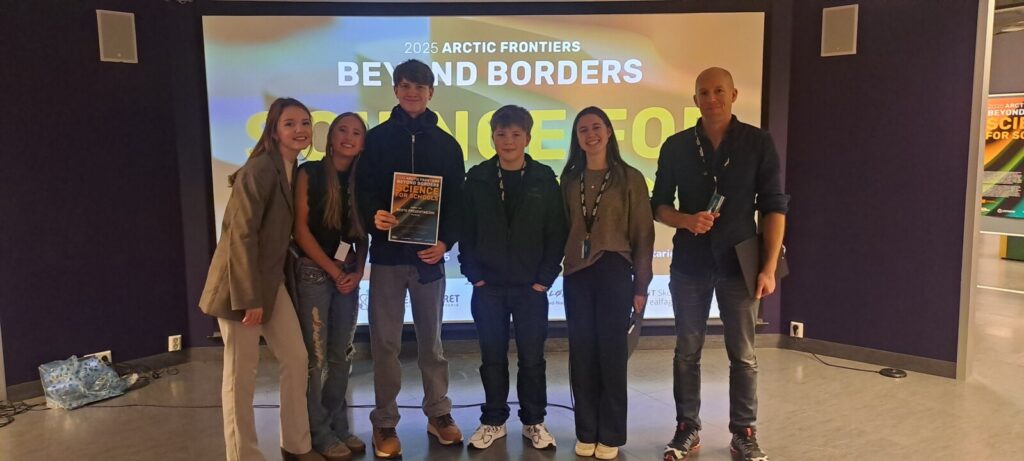
Overall winner for Best Presentation with their project entitled “Zombie Salmon Apocalypse” (Photo: Lucina Rudloff)
Both days started with two talks from local researchers. This year the presentations were given by William Copeland of the Norwegian Ice Service at MET-Tromsø, and Delphin Ruché of Rissa Citizen Science, who are both engaged in science and outreach in Northern Norway. Following the talks, each student group was given around seven minutes to present their poster and answer some questions from the jury, which consisted of myself and Delphin.
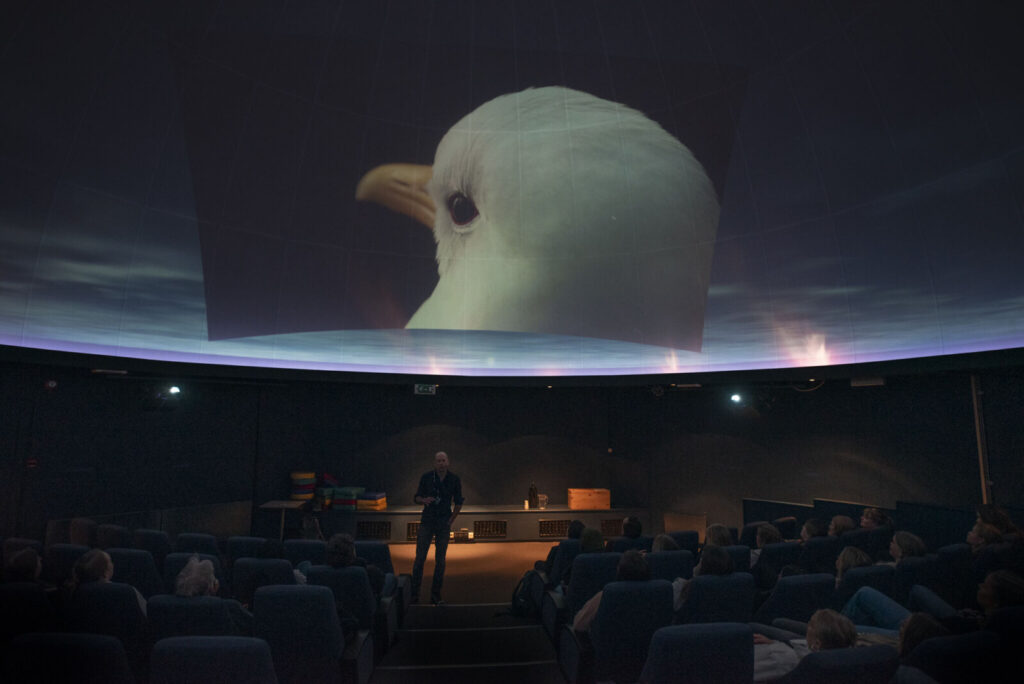
Delphin Ruché presenting about his work and his non-profit, Rissa Citizen Science (Photo: Lucina Rudloff)
Over the course of the competition, we saw presentations from 26 student groups. I’d like to take a moment to say how impressed I was with all the presenters. You could tell that a lot of hard work went into the projects, and despite the intimidating circumstances (presenting to complete strangers in a second language) all the groups did very well.
A highlight of the competition was the group that created a parody to Brittney Spears’s “Toxic” to present their research on mercury escaping from the permafrost. They definitely got my vote for most creative! Should we propose more singing at future conferences? EGU I’m looking at you…
From local to global perspectives: A broad range of topics
One thing in particular that struck me over the course of the program was the wide range of projects. Some groups chose to focus on issues in Tromsø, for example investigating microplastics in the huge snow piles around town. Microplastics are an increasingly concerning environmental contaminant. A recent 2025 study by Nihart et al. showed that adult human brains can contain enough microplastics to make a plastic spoon, likely due to diet or airborne contamination.
Others researched broader questions related to Arctic health, such how melting sea ice affects Arctic species. With global temperatures rising, so are the temperatures in our oceans. Already scientists have recorded significant decreases in Arctic sea ice cover, which can have dramatic effects on Arctic wildlife and ecosystems. Broader still, some groups chose to investigate how larger-scale topics, such as AI, deep sea mining, and war, affect the Arctic and the world beyond.
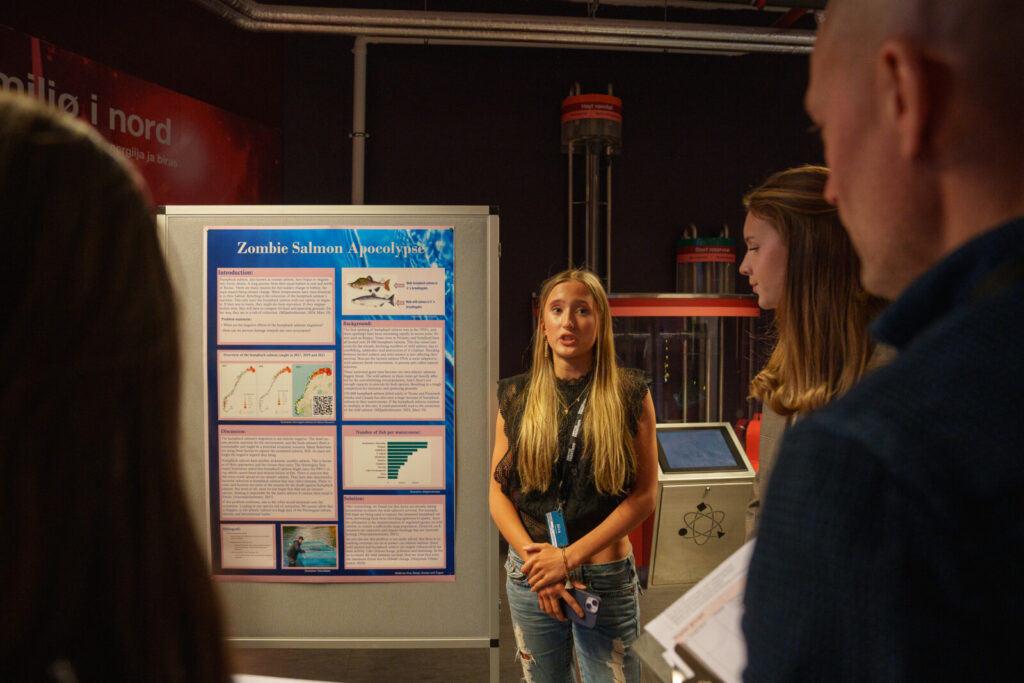
A student sharing what they learned while researching shifts in Arctic salmon populations (Photo: Alexandru Mitu)
Many of the students chose to explore a topic either directly or indirectly related to climate change. These kids have a distinct perspective growing up in the vulnerable and ever-changing Arctic, which experiences warming at three times the rate of the rest of the planet.. It should come as no surprise, then, that climate change is on the forefront of their minds. I appreciated how many of the students based their projects on their lived experiences, for example exploring why they catch less fish at their family cabin than they used to. In their short lifetimes, these students have already witnessed vast shifts in the environments around them, and many deeply understand the consequences of continued greenhouse gas emissions.
My favorite part of being on the jury was being able to ask the kids questions and engage in some interesting discussions. Many students were not only prepared, but excited to have a conversation with us about the information they found and the opinions they formed along the way. When talking about solutions to the Arctic’s environmental issues there’s hardly ever a “right” answer, but these kids worked hard to defend their own solutions. I know that there were absolutely some future scientists in that room.
Science for more schools
As communities in the Arctic and beyond confront the vast environmental and societal threats presented by climate change, the need for immediate action continues to make itself clear. The youth of our communities will carry this burden into the future, and it’s our job to provide them with the tools they need to intervene, and more importantly, to not lose hope in the face of increasing disasters.
Introducing them in-person to researchers addressing real problems in their communities shows these students that a tangible difference can be made with enough awareness, creativity, and dedication. Solutions are no longer an abstract concept you learn about in class, rather they’re something you can enact yourself.
And if students don’t feel called towards research itself, the skills they develop through this program will help them in any of their future career paths. Advocates, policy-makers, business owners, teachers, and really any citizen can benefit from knowing how to ask questions and explore some possible solutions.
Another asset of this program is it’s placed-based approach. Through their investigations, students become more aware of the environment around them, and the issues that their society faces. This connection instils a feeling of dedication and investment, which goes a long way in making lasting change.
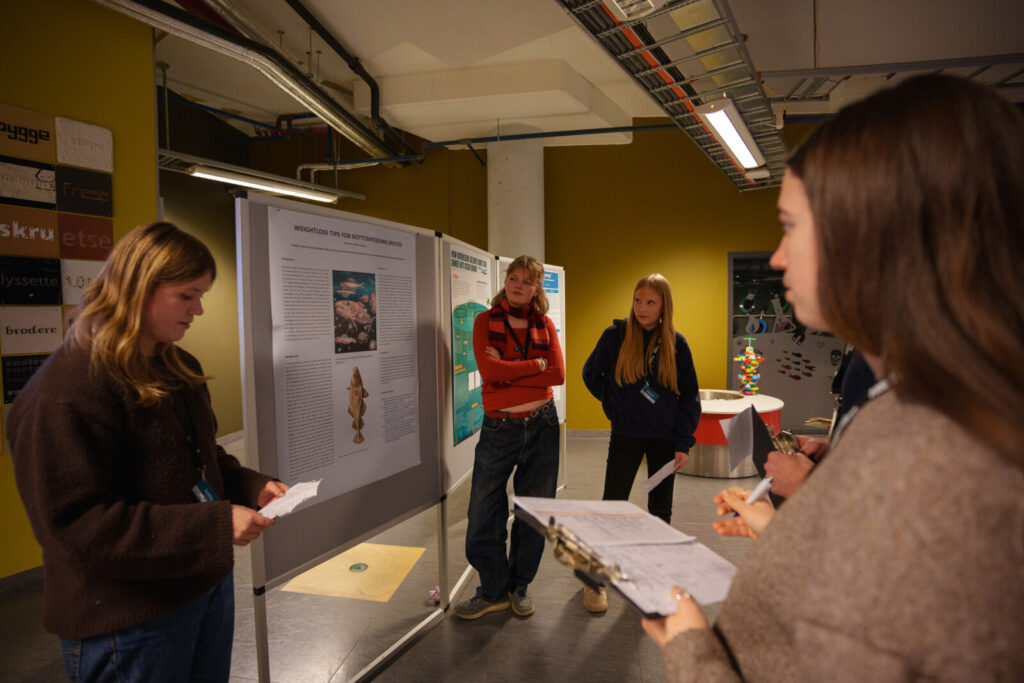
A group presenting their project, “Weight Loss Tips for Bottom-feeding Species” (Photo: Alexandru Mitu)
When it comes to climate change, there’s a strong sense of fear and anxiety, but there’s also passion and dedication. While the Arctic Frontiers Science for Schools program specifically focuses on issues in the Arctic, there’s no reason that similar programs couldn’t be implemented in communities all around the world. From the Amazon Rainforests to the Great Plains, engaging youth everywhere in science and research helps to create a generation of thinkers equipped to take on the looming problems that face our planet.
Special thanks to Young Program Coordinator Lucina Rudloff, Arctic Frontiers, and The Northern Norwegian Science Center for allowing me to play a brief role in this awesome competition. I’m excited to see how this and similar programs continue to encourage young scientists in the future.

